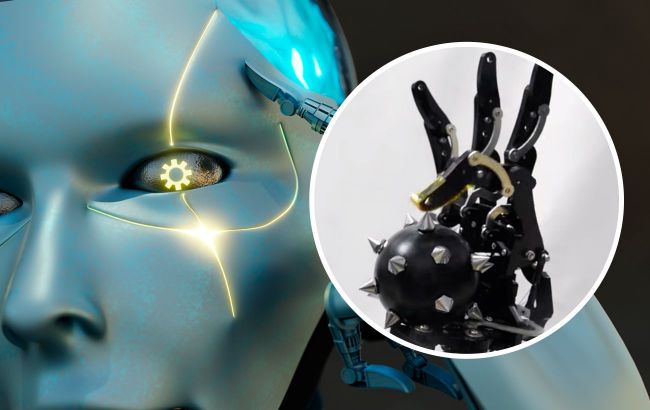Researchers teach robots to sense pain: Details
 Smart robots can better assist humans (Collage: RBC-Ukraine)
Smart robots can better assist humans (Collage: RBC-Ukraine)
Scientists from a Chinese university have developed cutting-edge synthetic skin and a specialized artificial intelligence algorithm that will enable robots to sense pain and react to danger. New Scientist reports what is known about the new technology and its potential future applications.
How humans feel pain
In humans, sensations of pain arise from a complex interaction between peripheral nerve signals and their interpretation by the brain.
Pain sensors (nociceptors) present in human skin transmit electrical impulses along nerves to several areas of the brain, activating the self-preservation system (for instance, causing one to pull their hand away from fire or a sharp knife).
Key details on the invention
Scientists at Hunan University in China have developed synthetic skin based on human processes.
At the core of the invention lies a pain-probing system that operates through the cooperation of zinc crystals and helium gel.
According to researchers, these crystals respond to excessive force application and release electrons, generating an electric signal and a flash of light that helps pinpoint the precise location where the robot feels pain.
 The system of crystals created by scientists (screenshot: youtube.com/New Scientist)
The system of crystals created by scientists (screenshot: youtube.com/New Scientist)
Unique aspects of the new technology
According to scientist Jie Tan, artificial skin will enable robots to detect and react to danger. For the invention to function fully, scientists designed a specialized artificial intelligence algorithm that assists the robot in determining which 'stimulus' should be avoided.
Tan clarifies that the utilization of electrical and optical signals enables the simultaneous perception of pain intensity and location. He adds that this resembles the functionality of a natural nociceptor.
Scientists have already trained the program on about 100 electrical and optical indicators. Testing was conducted using a knife, stick, and cotton ball (pressed against the sensor). Through this, the algorithm learned to differentiate harmful and harmless objects that might produce similar readings.
Potential applications
As per the research findings, the robotized hand learned to successfully distinguish between safe and unsafe objects in the majority (97.5%) of cases.
The artificial intelligence understood, for instance, that the robotic arm could safely hold a boiled egg, but it immediately rejected a ball with iron spikes.
Further work by scientists uncovered another potential application for synthetic skin. They attached patches of it to the heart, liver, and lungs of a rat, allowing a surgical robot to perform a biopsy (collecting tissue samples for subsequent microscopic analysis).
The signals received by the robot from the skin during the procedure directed its arm in such a way as to avoid damaging these organs.
Based on this, scientists suggest that synthetic skin could be embedded in surgical instruments, enabling doctors to feel things at a distance.
Also, read about how the futuristic smart Fusion AI E-Bike will differ from a regular one.

